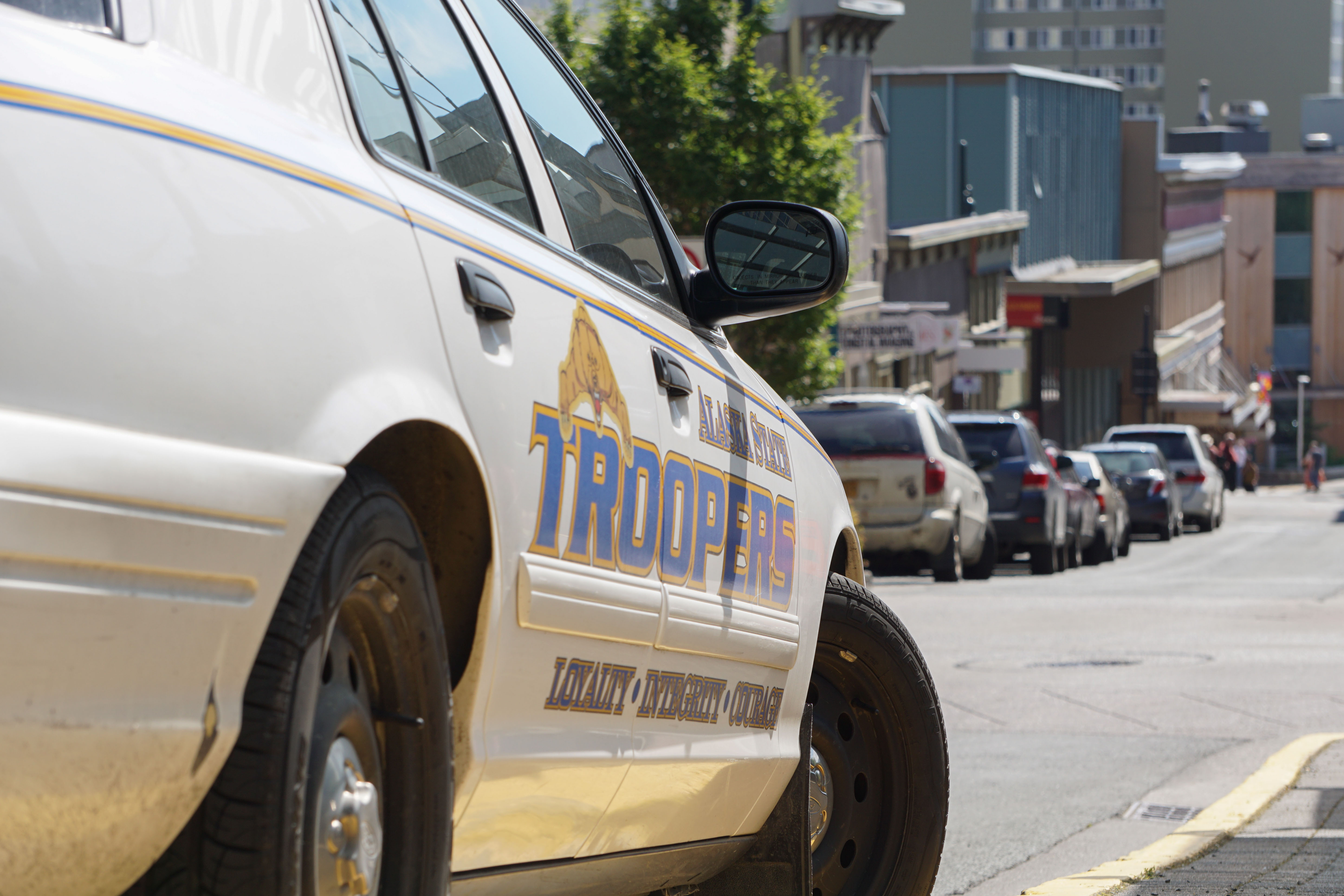
Nearly 90% of Alaska State Troopers are white, according to new data released by Gov. Mike Dunleavy’s administration, which show that the primary statewide law enforcement agency is substantially less diverse than Alaska’s population.
About 87% of the state’s 355 troopers are white, the agency said in response to a public records request, compared to 65% of Alaska’s population. Alaska Natives and American Indians have the next-largest representation among troopers, at 5%, compared to some 20% of the population overall.
Law enforcement agencies across the country have pushed to diversify their ranks in recent years amid protests over police violence, particularly against Black people. Experts say that more racially mixed police forces can reduce misconduct by officers and make them more approachable to minority groups.
Nationally, departments have become more diverse over the past few decades, but they’re still disproportionately white because that change has moved more slowly than the nation’s demographics, the Washington Post reported last month. In Anchorage, the police department is currently 79% white, down from 83% in 2016.
Numbers for the Alaska State Troopers, however, have not changed significantly in recent years, though “our efforts have been significant,” spokeswoman Megan Peters wrote in an email.
The Department of Public Safety, which oversees the troopers, declined to make leaders available for an interview. But Peters, in response to emailed questions, acknowledged that boosting diversity could make troopers more effective.
The troopers are confident that their hiring process is fair, but “we can’t hire people if they won’t apply, and it is in this area where the deficit lies,” Peters said. One of the biggest barriers is that people generally interact with troopers when they’re having a “really bad day,” which means that most contacts are negative contacts, she added.
“In order to create a relationship with a potential trooper that results in a job application, we must have significant contact with the applicant in a positive way, and that isn’t happening often enough,” Peters wrote. “When it does occur, it’s most often when someone spends time with a trooper off-duty. These positive contacts are extremely resource-intensive to create during the duty day. Funds to support programs that would help in this way are hard to find.”
Instead, the agency plans to continue recruiting heavily among the military branches, as well as giving extra time to applicants from diverse groups and targeting through advertising, Peters said.
Those recruitment efforts should continue, but the troopers need to make more “systemic change” so that people from diverse backgrounds want to work there, said Charlene Apok, director of gender, justice and healing at Native Movement, a Native advocacy group.
“What happens if they actively hire and recruit people of color into a violent system? They’re not going to be able to retain them,” Apok said in a phone interview. She added: “They need to do their part with the active recruiting and hiring. But it needs to be paired with trainings across the institution, so that it doesn’t only perpetuate violence.”
Apok, who read Peters’ email, said she found the troopers’ statements about its diversification efforts to be “defensive,” and an effort to “perpetuate the way that they’re doing their work right now.”
“And that isn’t the goal of what the community is asking from them,” she said.
One former public safety commissioner, Walt Monegan, said he’d “probably kick myself” for not making more concerted efforts to diversify the state troopers before leaving his position in 2018.
Monegan, who’s part Alaska Native, said he was brought into law enforcement through a positive interaction like the ones that Peters described.
The idea had never occurred to him before he was working a temporary desk job in a state office building in Bethel, after serving in the Marine Corps. He was pouring himself a cup of coffee when he ran into a couple of troopers.
“They said, ‘Walt, you just got out of the Marines. You ever thought about being a trooper?’” he said. “And I looked at them and I said, ‘No, not really. I don’t think anybody likes you guys.’”
More than a year later, Monegan was looking for jobs in the newspaper, saw that the Anchorage Police Department was hiring, remembered his conversation with the troopers and applied. He eventually became APD’s chief.
The biggest obstacle to recruiting people from minority groups is that they don’t feel they’re qualified, Monegan said.
“We don’t reach out enough to say, ‘We believe in you. We need you,’” he said. “When you look at the obviously white, male makeup of any department, it’s like, ‘Why should I join them? It looks like it’s a white man’s club.”
One thing that has made the problem less dramatic, Monegan said, is that law enforcement agencies in Alaska are generally trusted.
“If you’re doing well with the communities you serve, then what’s the big hurry?” he said. “Because what we’re doing is working.”
Apok, with Native Movement, said she respects Monegan’s experience, but questions his conclusions. She said that members of minority groups don’t always feel empowered to give forthright opinions when asked by police officers or troopers to share them.
“I think they’re missing a whole bunch of the community’s realities, maybe only seeing it from the uniform side,” she said. “Because in my experience and working as a community organizer and at a grassroots level, I wouldn’t say we share the same ideas and perceptions of the reputation of the state troopers in our communities.”
